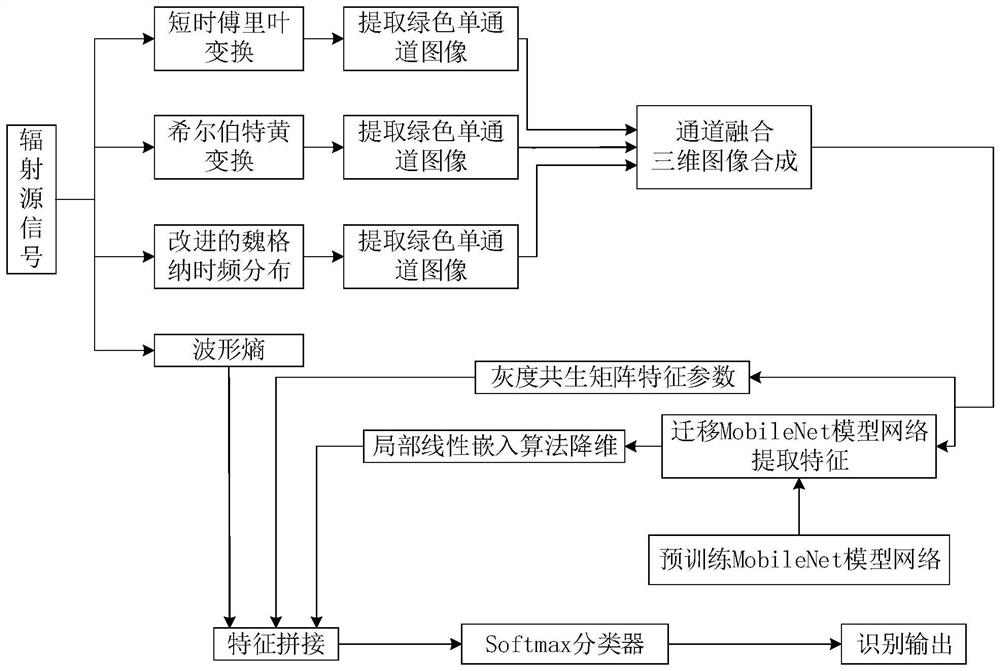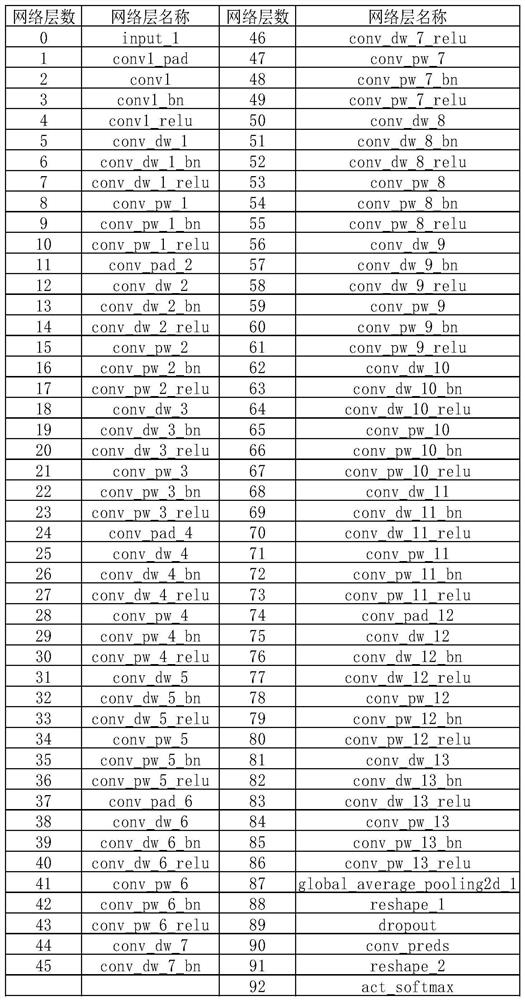A Radiation Source Signal Recognition Method Combining Two Domains and Multiple Features
A signal recognition and radiation source technology, applied in the field of information detection, can solve the problems of low recognition rate and weak generalization ability, and achieve the effect of improving recognition rate, enhancing generalization ability, and comprehensive feature information.
- Summary
- Abstract
- Description
- Claims
- Application Information
AI Technical Summary
Problems solved by technology
Method used
Image
Examples
Embodiment Construction
[0121] The present invention will be further described below in conjunction with the accompanying drawings.
[0122] Step 1: Perform short-time Fourier transform on the radiation source signal sig(t) to obtain a time-frequency domain image, and denote the time-frequency domain image as TF 1 . The short-time Fourier transform formula is:
[0123]
[0124] In the formula, e is the Euler number, ζ(τ) is the window function, (·) * Indicates the conjugate operation, t represents time, f represents frequency, and τ is the integral variable.
[0125] Step 2: Perform an improved Wegener time-frequency distribution transformation on the radiation source signal to obtain a time-frequency domain image, and denote the time-frequency domain image as TF 2 . The improved Wegener time-frequency distribution transformation formula is:
[0126]
[0127] In the formula, (·) * Indicates conjugate operation, t is time, f is frequency, φ is frequency shift variable, is the time shift ...
PUM
 Login to View More
Login to View More Abstract
Description
Claims
Application Information
 Login to View More
Login to View More - R&D
- Intellectual Property
- Life Sciences
- Materials
- Tech Scout
- Unparalleled Data Quality
- Higher Quality Content
- 60% Fewer Hallucinations
Browse by: Latest US Patents, China's latest patents, Technical Efficacy Thesaurus, Application Domain, Technology Topic, Popular Technical Reports.
© 2025 PatSnap. All rights reserved.Legal|Privacy policy|Modern Slavery Act Transparency Statement|Sitemap|About US| Contact US: help@patsnap.com



